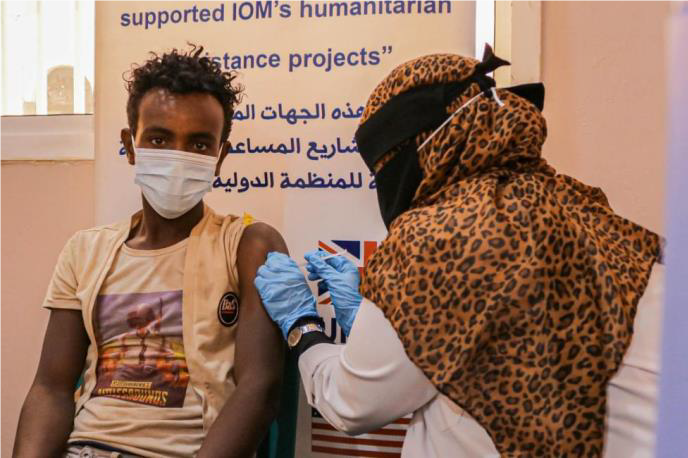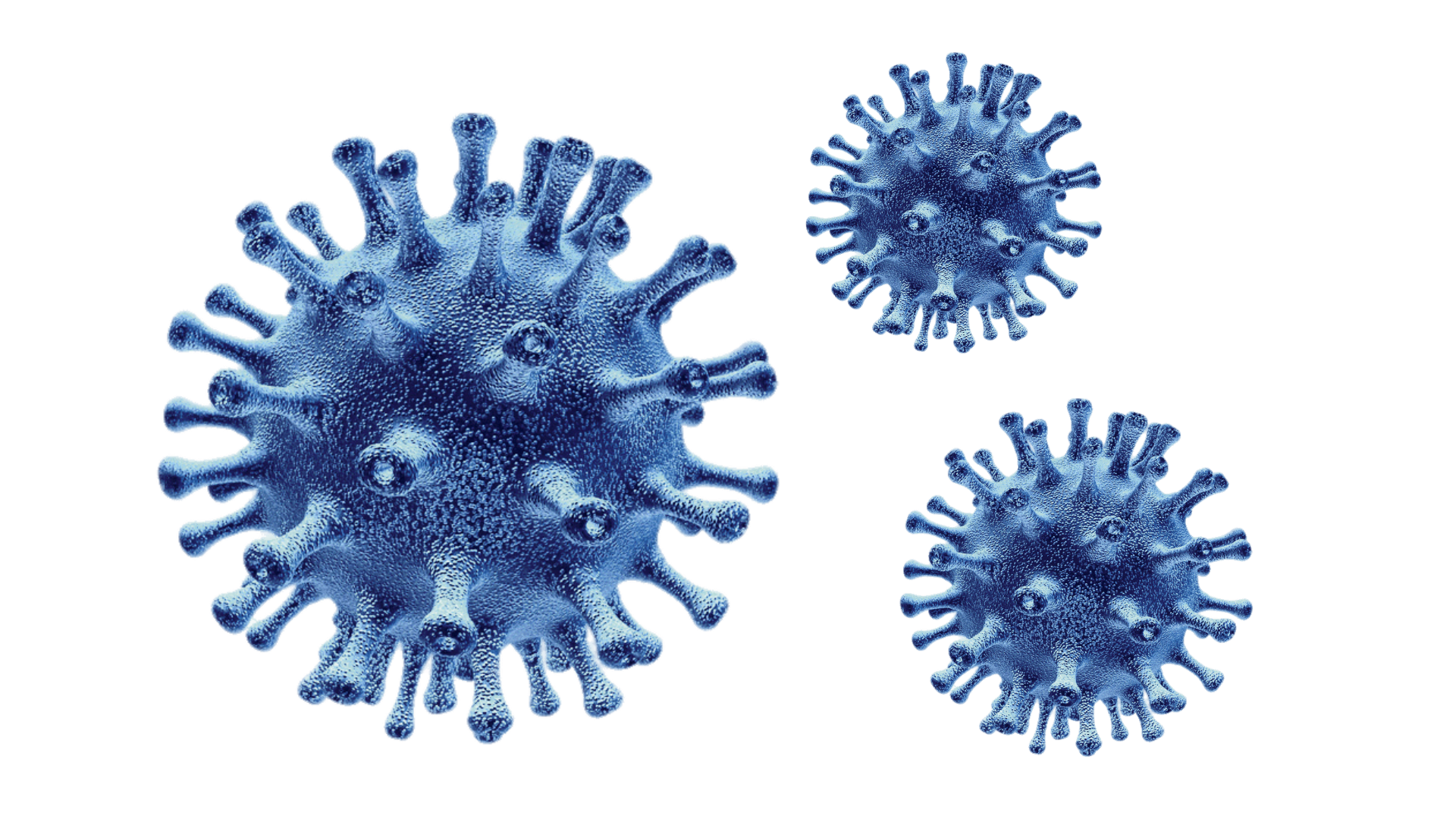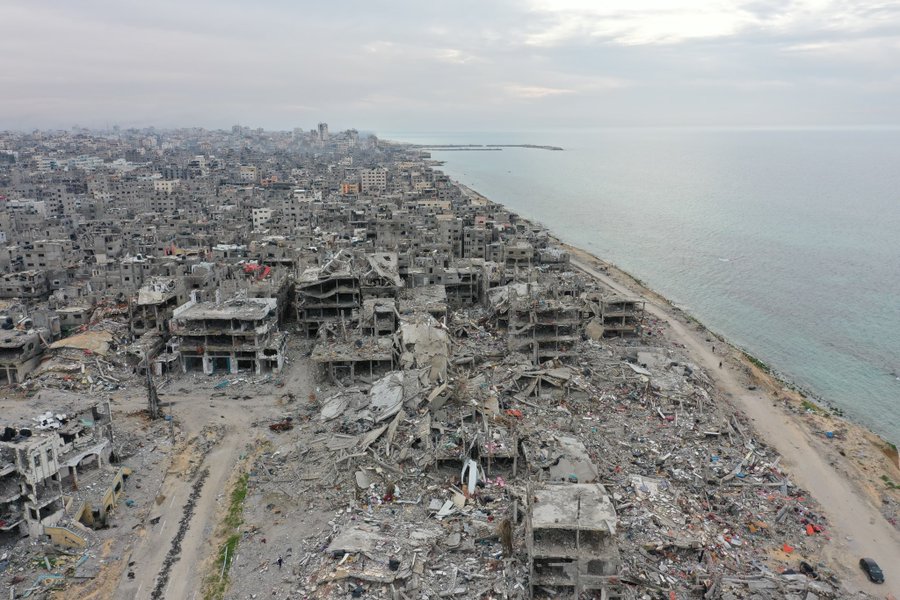The United Nations & COVID-19 Global Health Emergency
Download the PDF version of this summary
Secretary-General Guterres stated, “COVID-19 is the greatest test” since World War II; “it is more than a health crisis. It is a human crisis.” The UN chief released a plan to counter COVID19, which emphasizes the need for countries to act in concert and outlines ways to suppress transmission of the virus, safeguard people’s lives and their livelihoods, and learn from the crisis to build back. Provided below is a snapshot of UN efforts overseas to combat COVID-19.
Provided below is a snapshot of UN efforts overseas to combat COVID-19. This edition includes information on a UNHCR vaccination campaign for refugees living in Jordan and a new agreement between UNICEF and Clover Biopharmaceutical that will make over 400 million doses of Clover’s SCB 2019 vaccine available to participants of the COVAX Facility next year.
This reference document is by no means comprehensive of all the UN’s work; it is meant to illustrate the various ways the “UN Family” confronts a global pandemic, based on both its past actions and new methods. This document will be updated regularly but please reach out if you have any questions. For further background, the United Nations has also developed a resource to monitor the latest updates.

International Organization for Migration (IOM)
- IOM has begun a COVID-19 vaccination campaign for migrants stranded in Yemen, aiming to inoculate around 7,500 people at its Migrant Response Pointsin Aden and Ma’rib. COVID-19 has had severe consequences for the health, well-being and income of people in Yemen. As of December 12, 2021 there have been more than 10,000 cases reported, but the full impact is difficult to assess due to limited testing and reporting across the country. Since April, IOM has been supporting efforts by the Ministry of Health to vaccinate at-risk and hard-to-reach populations, including health workers, people with chronic illnesses and elderly citizens, at IOM-supported health centres in Aden, Ma’rib and Ta’iz governorates. One Ethiopian migrant who received the vaccine in Aden, Naima Mohammed, said: “Last year one of my relatives died from COVID-19. Since then, I’ve come to the Migrant Response Point several times to learn measures to avoid contracting the virus, like handwashing and mask wearing. Now that I’m vaccinated, I’m more protected.” The pandemic has had a dire impact on the most marginalized communities who lack access to health care, clean water and sanitation. An estimated 36,000 migrants have been stranded on their journeys due to COVID-19-related mobility restrictions, nearly 3,500 in Ma’rib.
World Food Programme (WFP)
- In Lebanon, WFP is scaling up its support to the Emergency Social Safety Net
project in partnership with the Government to channel funding from the World Bank through its social protection system. The project will transfer cash assistance to at least 147,000 of the most vulnerable Lebanese households, with additional support to 87,000 of these households with children in school to ensure they complete their studies. It will also transfer funds directly to schools so they can continue teaching throughout the crisis. - In Malawi, WFP—in collaboration with UNICEF, ILO and other partners—is rolling out the COVID-19 Urban Cash Intervention to support the livelihoods of vulnerable urban communities. The intervention will target over 850,000 people with emergency cash-based assistance for six months and will develop into a national social protection system for urban communities beyond the pandemic.
- In Armenia, WFP continues to support the Government’s capacity to safely implement school feeding during the pandemic by donating PPE to the Ministry of Education. The protective materials will allow canteens to remain open and serve school meals to approximately 100,000 primary school children. Amazon Disaster Relief has supported WFP in these efforts through the donations of PPE worth an estimated $7 million.
UN Refugee Agency (UNHCR)
- In Jordan, UNHCR reports that 53 percent of the eligible population living in refugee camps and 33 percent of the eligible refugee population living in urban areas have been vaccinated against COVID-19. Over the last two months, UNHCR has operated three mobile vaccination units at its registration centers in Amman, Mafraq, and Irbid. Over 1,300 refugees have been inoculated through this exercise. In early December, UNHCR also began distributing small cash amounts ($10) to all refugees living outside of camps who had received two doses of the COVID-19 vaccine, in order to assist with any related transportation costs and encourage vaccine uptake. In neighboring Lebanon, UNHCR has deployed mobile vaccination units to help refugees get vaccinated and has provided fuel to 18 hospitals across the country to ensure they’re able to continue delivering lifesaving medical care.
Food and Agriculture Organization of the United Nations (FAO)
- FAO and UNICEF reported that the state of food security and nutrition in Asia and the Pacific has worsened, as more than 375 million people in the region faced hunger in 2020—an increase of 54 million over 2019. While hunger has increased, so too has inadequate access to nutritious foods. In this region alone, more than one billion people did not have access to adequate food in 2020—an increase of almost 150 million people in just one year. This is a trend that’s worsened by the arrival of COVID-19. While it’s not yet possible to fully quantify the damage the pandemic has done to overall food security and nutrition, the pandemic has had a serious impact on the region. Even countries that initially reported a limited number of COVID-19 cases experienced the negative effects of the containment measures, combined with people’s health concerns, that led to a major contraction of economic activity in this region and worldwide. Disruption in food supply chains only added to the problems. To fully respond, FAO and UNICEF have called on the international community to focus on meeting the needs of small-scale, family farmers and indigenous people in the region, as well as ensuring food systems prioritize the dietary needs of vulnerable groups, including young children and women.
UNICEF
- UNICEF and Clover Biopharmaceutical signed a long-term agreement on December 7 that grants UNICEF access to up to 414 million doses of Clover’s COVID-19 vaccine until the end of 2022. These doses were committed to the COVAX Facility through an Advance Purchase Agreement signed between Gavi, the Vaccine Alliance, and Clover Biopharmaceuticals. The vaccine will be supplied to participating countries and territories in the COVAX Facility’s Advance Market Commitment, as well as self-financing participants. This agreement further expands UNICEF’s COVID-19 vaccine supplier base and provides further diversification by providing access to the first protein subunit vaccine. Deliveries could start as early as Q1 2022, provided countries are ready to receive them and WHO grants an Emergency Use Listing. The COVAX Allocation Framework will determine the dose allocations to COVAX participants taking into consideration vaccination coverage, country capacity to store and administer doses, vaccine supply through COVAX to date, operating and supply aspects, and other parameters.
UN Development Programme (UNDP)
- In Myanmar, UNDP is leading a team of 19 agencies, funds, programs, and IFIs to mitigate COVID-19 impacts. An 18-month response plan includes one-time cash transfers to internally displaced people and other vulnerable groups. UN agencies initially focused on averting massive lay-offs and bankruptcies in sectors providing crucial jobs and livelihoods to Myanmar households. Additional responses have included emergency cash grants for 80,000 garment workers, a public awareness campaign informing workers and employers how to protect themselves in work environments, and loans to micro, small, and medium-sized enterprise.




